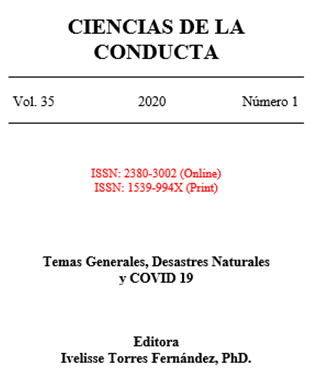Hurricane Maria in Puerto Rico: Experiences and roles of physiotherapists
Keywords:
rehabilitation, physical therapy, natural disaster, musculoskeletal injuryAbstract
There isn´t much literature about the involvement of physical therapists after natural disasters. In 2017, hurricane Maria brought considerable damage to Puerto Rico. This study provides evidence of the participation of physical therapists in Puerto Rico after Maria and describes the incidence of musculoskeletal injuries and other health conditions arising from the event. Twelve physical therapists participated through semi-structured interviews and a focus group. Physical therapists took on roles such as assisting other professions in hospitals, educating in injury prevention and helping communities. An increase in musculoskeletal injuries to hip, shoulder and back were seen, mainly from falls. After a natural disaster, physical therapists can assume different roles, but many are unaware that they can be part of the response team and how to use their skills in the midst of an emergency.
References
American Physical Therapy Association. (s.f.). Role of a physical therapist. http://www.apta.org/PTCareers/RoleofaPT/
Barr, K., Martin, M., Orvis, B., Sarkisian, K., Tomanovich, Z., O´Dwyer , L. & Hartman, J. (2018). Physical therapy in disaster response: a scoping review. Poster presentado
en el American Physical Therapy Association Combined Sections Meeting. New Orleans, USA.
Bartholdson, S. & von Schreeb, J. (2018). Natural disasters and injuries: what does a surgeon need to know. Current Trauma Reports, 4(2), 103-108. doi: 10.1007/s40719-
-0125-3
Disaster Medicine. (s.f.). Four Phases of Disaster Management. https://disastermedicine.wordpress.com/four-phases-of-disaster-management/
Federal Emergency Management Agency. (s.f.). Emergency management in the United States. https://training.fema.gov/emiweb/downloads/is111_unit%204.pdf
Faul, M., Weller, N. & Jones, J. (2011). Injuries after hurricane Katrina among gulf coast evacuees sheltered in Houston, Texas. Journal of Emergency Nursing, 37(5), 460-
doi: 10.1016/j.jen.2010.12.019.
Hasselman, V., Odermatt, P., Rau, B. (2015). Post-operative physiotherapy in foreign medical interventions during humanitarian crises: a literature review. Poster
presentado en el Congreso de la Confederación Mundial de Terapia Física. Singapore.
Khan, F., Amatya, B., Gosney, J., Rathore, F. & Burkle, F. (2015). Medical Rehabilitation in Natural Disasters: A Review. Archives of Physical Medicine and Rehabilitation, 96,
-1727. doi: 10.1016/j.apmr.2015.02.007
Landry, M., Sheppard, P., Leung, K., Retis, C., Salvador, E. & Raman, S. (2016). The 2015 Nepal earthquake(s): Lessons learned from the disability and rehabilitation
sector's preparation for, and response to, natural disasters. Physical Therapy, 96(11), 1714-1723. doi: 10.2522/ptj.20150677
Lathia, C., Skelton, P. & Clift, Z. (2020). Early rehabilitation in conflicts and disasters. HI.https://hi.org/sn_uploads/document/36199-Humanity--Inclusion-Clinical-
Handbook-web_1.pdf.
Moustakas, C. (1994). Phenomenological research methods. Sage Publications.Organ, D. W. (1988). Organizational Citizenship Behavior: The Good Soldier Syndrome.
Lexington Books.
Sheppard, P., & Landry, M. (2015). Lessons from the 2015 earthquake(s) in Nepal: implication for rehabilitation. Disability and Rehabilitation, 1(4), 1-4.
https://doi.org/10.3109/09638288.2015.1064482
Warfield, C. (s.f.) The Disaster Management Cycle. https://www.gdrc.org/uem/disasters/1-dm_cycle.html
Wolf, R. (2019). PTs, PTAs and disaster response. PT in Motion, 11(9), 38-44.
World Confederation for Physical Therapy. (2016). WCPT report: The role of physical therapists in disaster management. London, UK.




